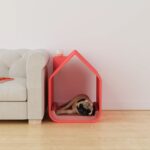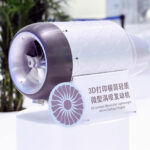The modern 3D printing space is a far cry from the days of plastic prototypes. Today’s users have their choice of materials, from rigid and flexible polymers to high-performance composites. One such material that’s finding more uses across industries is ceramic. We touched lightly on ceramic 3D printing when we looked at metal DLP 3D printing but let’s take a deeper dive.
3D Printing Ceramics
So what is ceramic? It’s a fairly broad term that includes everything between earthenware and Alumina. The origins of ceramic can be traced to Greece where they would bake clay at high temperatures to make it rigid. Technically speaking, ceramic is a solid material comprising an inorganic compound of metal, non-metal, or ionic and covalent bonds. Carbon and silicon can be considered ceramics from that perspective, and that’s important to note because the names of many of the 3D printable ceramics sound more like metals as they are not derived from clay. Nowadays, ceramics are divided into two categories: classic ceramics that are made up of only natural raw materials (clay) and technical ceramics that include other materials like silicon, carbon, and nitrogen.
Classic ceramics include stoneware, earthenware, and porcelain. Technical ceramics are also known as engineered ceramics and industrial ceramics, and their list would be much longer because more are regularly created as custom solutions for specific applications. Some popular technical ceramics are Aluminum Nitride, Zirconia, Silicon Nitride, Silicon Carbide, and Alumina. Technical ceramics have dramatically improved mechanical, thermal, chemical, and electrical properties as compared to classic ceramics. Most 3D printed ceramics fall into the technical category but the extrusion based printing process (discussed below) works primarily with classic ceramics.
Why print with ceramic?
- Aesthetic
- Tactility
- Chemical resistance
- Biocompatible
- High or low thermal conductivity, depending on formulation
- Electrical insulator
- Very hard
- High strength-to-weight ratio
Industries
That’s quite an appealing list of physical and mechanical properties. It makes sense that ceramic is used in many industries, and 3D printed versions are quickly replacing traditional ceramic parts. The first thing that comes to mind when thinking about ceramic is usually pottery and cookware, and yes, some artists are 3D printing ceramic vases, bowls, and sculptures. Ceramic has a pleasant look and feel and it can be fired to alter both of those traits. That’s just the tip of the iceberg, though. Here are some of the industries that rely upon ceramics:
- Aerospace – The dimensional stability and low density of ceramic makes it ideal for sending into space on rockets and satellites in the form of bearings, seals, and thermal shields; parts undergo extreme temperature changes in space depending on their relative position to the Sun so it’s important that materials don’t shrink and expand in those temperature shifts, and of course, the cost of sending anything into space is directly tied to mass (weight) so lightness is always a priority.
- Aviation – Those same properties are just as helpful, if not more so, in Earth’s atmosphere where there’s much more turbulence and (air) friction to deal with; ceramic is highly resistant to abrasion and heat so it can be found in various aircraft components, including armor, electrical insulation, and fuel nozzles. There’s good reason the NASA Space Shuttle was covered with ceramic plates (it was to prevent it from burning up upon reentry).
- Automotive – The hardness and toughness of ceramic are especially useful in the automotive manufacturing space because, let’s face it, we’re kind of rough on our cars. Temperature swings, vibration, humidity, various chemicals and oils; our vehicles have to deal with it all. From spark plugs and brakes to sensors and filters, there are countless parts in any given car that have ceramic in them.
- Medical – The fact that ceramic is light, durable, and biocompatible makes it a great material for the medical and surgical industries where it’s used for implants, surgical tools and guides, and diagnostic equipment.
- Energy – Power generation and distribution systems are both highly demanding and critical and ceramic contributes to the reliability of these systems. Its wear-resistance, electrical insulation, and rigid mechanical properties allow it to survive the harsh environments of power plants.
- Chemical and pharmaceutical – Synthesizing chemicals and drugs requires processes that involve rapid temperature changes, pressure, and corrosion. Custom ceramics can be engineered to outlast most metals in the specialty machines used in the industry.
- Electrical engineering – Lots of electrical components have to operate in hostile environments, like the sensors in engines and furnaces as well as the vacuum chambers of particle accelerators; these are all cases where ceramics shine.
This is only a partial list as other applications of ceramics include optics, metallurgy, and textiles. The point is: ceramics are all around us and they do a lot. That means the potential market for 3D printed ceramics is rather large.
Types of Ceramic 3D Printing
There are five major processes for 3D printing ceramic:
- Extrusion – A paste or slurry of clay is pushed through a nozzle and parts are built up layer-by-layer like on a desktop 3D printer; resolution is lowest on this technology but it also scales up to the largest build volumes.
- Binder jetting – A binding agent is selectively applied to a bed of ceramic powder one layer at a time; final parts must go through a debinding process.
- Powder sintering – A high-power laser sinters the cross-sections of each layer onto a bed of ceramic powder.
- NanoParticle Jetting – Liquid suspensions containing solid ceramic nanoparticles are deposited with inkjets layer-by-layer.
- Photopolymerization (DLP) – Resin that’s filled with ceramic particles is used in a DLP printer that cures each layer into a solid with UV light; final parts must go through a debinding process.
All of the processes require firing to completely harden and some of the systems require an additional sintering step before firing. They can then be glazed to make them food, freezer, oven, and dishwasher safe. While the extrusion-based technology produces pretty rough results, the level of detail that can be achieved with the other printing processes is incredibly high. 3D printing enables ceramic geometries that could not be fabricated through traditional injection molding techniques so it’s no wonder that companies are adopting AM technologies to optimize their ceramic parts. The turnaround time on printed ceramic parts is much shorter as well, which is generally compelling to production managers. The same network of post processors that handle the sintering of many metal 3D printed objects will also be able to handle ceramic sintering so expect to see much more ceramic 3D printing.
Featured image courtesy of City University of Hong Kong.










